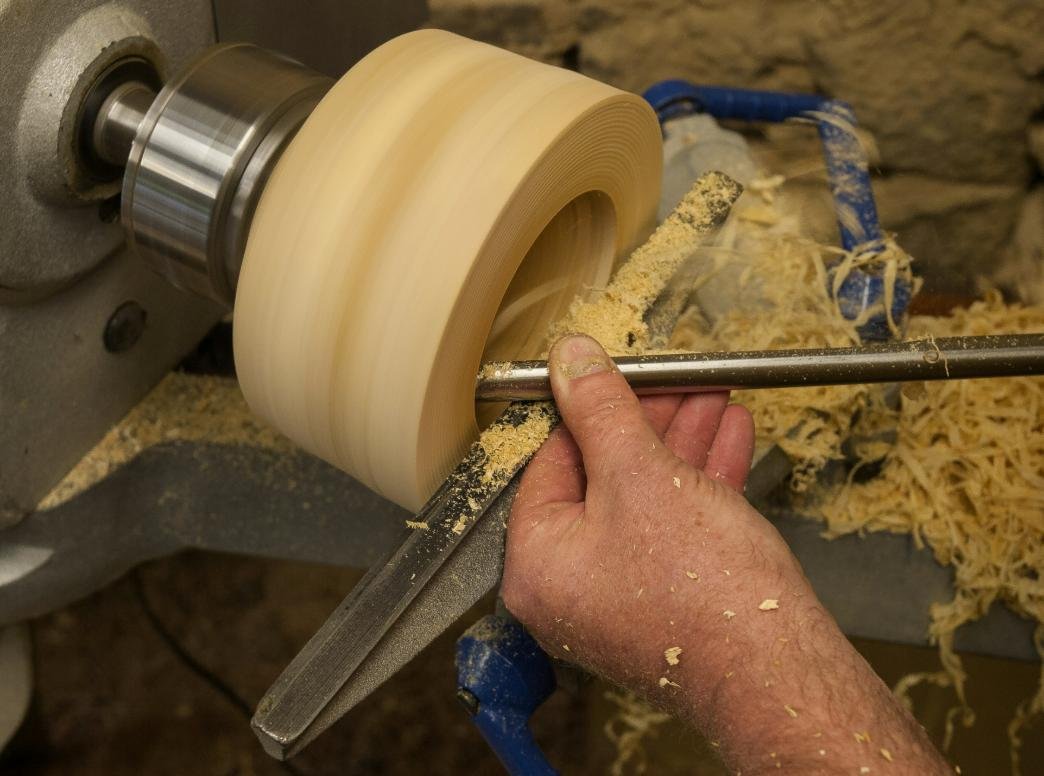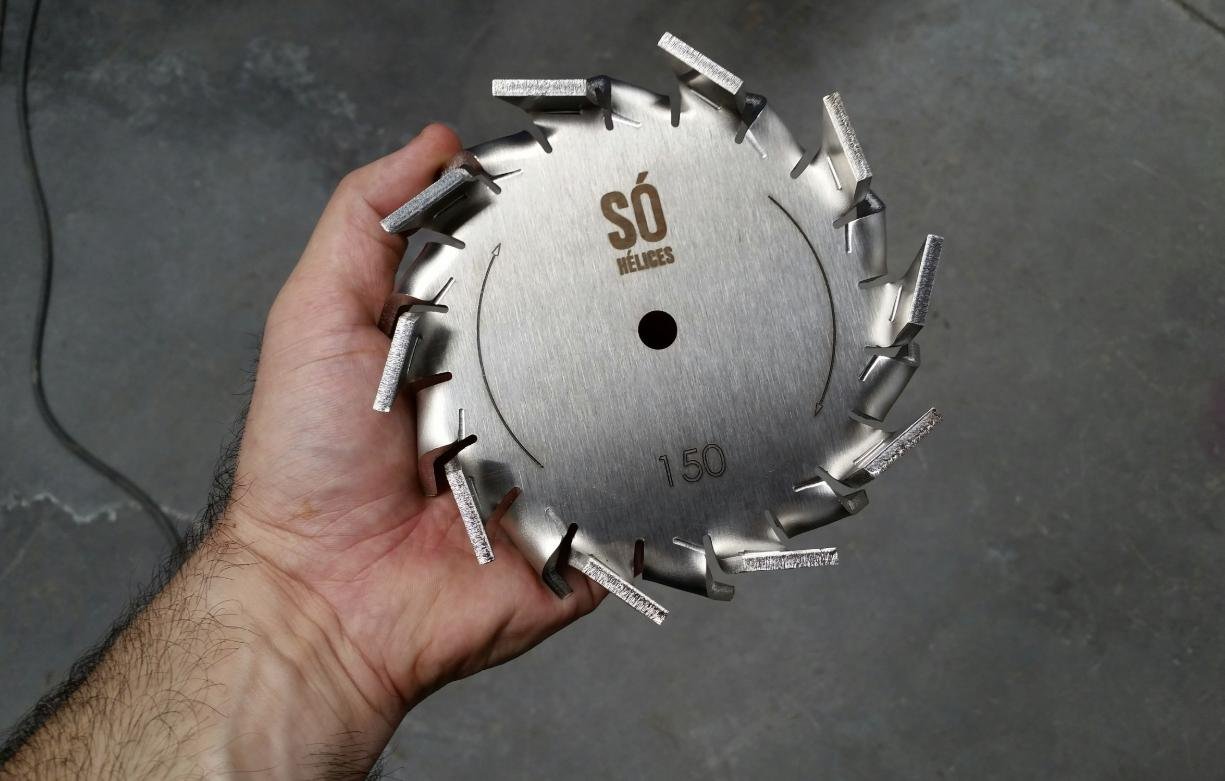Introduction to Wood Lathe Tools
Wood lathe tools are fundamental instruments in the craft of woodworking, specifically in the art of woodturning. These tools are designed to shape, cut, and texture wood as it rotates on a lathe, enabling artisans to create intricate designs, functional items, and artistic pieces. The purpose of wood lathe tools extends beyond mere cutting; they offer control over precision and detail, making them invaluable for both novice and experienced woodturners.
The variety of wood lathe tools available allows woodworkers to achieve different results, catering to diverse projects and skill levels. Among the most common types of lathe tools are chisels, gouges, and scrapers, each serving a unique function in the woodturning process. Chisels, for instance, come in various shapes and sizes, making them suitable for detailed shaping and finishing work. Gouges are characterized by their curved cutting edges, making them ideal for hollowing out and creating rounded shapes. Scrapers, on the other hand, are used to smooth the surface of the wood, allowing for a finer finish.
Understanding the purpose and application of each tool is essential for optimizing the woodturning experience. Beginners typically start with a basic set of tools to grasp foundational techniques, while seasoned woodturners often expand their collection to include specialized tools that accommodate advanced projects. The right selection of wood lathe tools not only enhances the quality of the finished product but also impacts the efficiency of the woodworking process.
This comprehensive guide aims to delve deeper into selecting the best wood lathe tools, ensuring that craftsmen, regardless of experience level, are equipped with the knowledge necessary for success in their woodworking endeavors.
Understanding Wood Lathe Tool Types
Choosing the right wood lathe tools is essential for successful woodturning projects. Among the primary types of tools available, roughing gouges stand out as a fundamental option. They are designed to quickly remove stock from the wood, allowing for efficient shaping of the workpiece. Typically characterized by their wide, rounded cutting edge, roughing gouges are ideal for transforming square blanks into cylindrical forms. Their robust construction makes them suitable for various hardwoods and softwoods, providing versatility for many projects.
Another critical tool is the spindle gouge, which is specifically crafted for crafting intricate profiles and details on spindle-turned projects. Its pointed blade allows for precise cuts and is perfect for creating beads, coves, and detailing. The spindle gouge provides good control and is preferable for finishing touches, helping to achieve finer details that enhance the visual appeal of the piece.
Bowl gouges play an essential role for those focused on bowl turning. These tools feature a deep, fluted profile that can handle the curvature of bowls, effectively removing material from the interior and exterior surfaces. The design of bowl gouges allows for aggressive cutting, making them suitable for rapid stock removal while retaining the ability to perform delicate finishing work.
Scrapers are another important category of wood lathe tools, utilized primarily for smoothing and refining surfaces. They generally feature a flat blade, which can be used to achieve a smooth finish on flat or curved surfaces. Scrapers are particularly useful for cleaning up tear-outs, providing a clean, flat surface before applying final finishes.
Lastly, parting tools are essential for any woodturner, helping to separate finished pieces from the main workpiece. With a narrow blade, they can create precise cuts, allowing for smooth parting and reducing the risk of damaging the completed project. Understanding these tool types provides a solid foundation for selecting the right tools to enhance your woodturning experience.
Criteria for Selecting Wood Lathe Tools
When choosing the best wood lathe tools, several criteria should be considered to ensure that the selected tools meet your specific needs and preferences. One of the primary factors is the tool material, which greatly influences the performance and durability of the tools. High-speed steel (HSS) is commonly favored due to its excellent edge retention and ease of sharpening. On the other hand, carbide-tipped tools are gaining popularity, as they provide a longer lifespan and require less frequent sharpening. Understanding the differences between these materials can assist in making an informed decision.
Another critical aspect is the size of the tool. Wood lathe tools come in various sizes, and selecting the appropriate size is essential depending on the projects you plan to undertake. Larger tools can be beneficial for more significant cuts and shaping, while smaller tools allow for more intricate detailing and precision work. Thus, the right balance between tool size and your project requirements is vital.
The handle length and weight of wood lathe tools also play a significant role in user experience. A longer handle can provide better leverage, which is beneficial for larger pieces, whereas a shorter handle may enhance control for detailed work. Additionally, the weight of the tool affects maneuverability; lighter tools are easier to handle for extended periods, reducing fatigue.
Ergonomics and comfort should not be overlooked when selecting wood lathe tools. Tools designed with comfort in mind allow for more extended use without causing strain. Features such as cushioned grips and well-balanced designs can enhance your overall experience and productivity while working on lathe projects. By evaluating these criteria, woodworkers can select tools that not only enhance performance but also contribute to a more enjoyable woodworking experience.
Assessing Skill Level and Project Needs
Choosing the right wood lathe tools begins with a clear understanding of one’s skill level and the specific requirements of upcoming projects. These factors are foundational to making informed decisions and ensuring successful woodworking outcomes. Beginners may find themselves overwhelmed by the variety of tools available; therefore, it is crucial to assess personal capabilities honestly before embarking on any woodworking journey.
For novice woodworkers, simpler tools that are user-friendly and easier to handle are recommended. These may include basic turning tools such as spindle gouges and roughing gouges. These tools allow beginners to learn essential techniques, such as shaping and finishing wooden objects, with a focus on safety and control. As skills advance, there is a gradual shift towards more specialized tools, such as bowl gouges or parting tools, suitable for more complex projects.
In contrast, professional woodworkers often have a diverse range of tools at their disposal, tailored for specific tasks, such as turning intricate vases or detailed spindles. The choice of tools for experienced craftsmen often includes high-quality materials and advanced designs, allowing for precision and durability. As they have acquired a deeper understanding of wood properties and turning techniques, professionals tend to select tools that enhance their creative control and efficiency.
Additionally, the type of projects one intends to undertake plays a pivotal role in tool selection. For instance, turning bowls typically requires larger and more robust tools compared to those needed for spindle work, which might necessitate finer, more delicate instruments. Therefore, clearly defining the scope of upcoming projects not only streamlines the selection process but also informs which tools will best serve one’s needs.
Ultimately, assessing both skill levels and specific project demands is essential in selecting wood lathe tools that enhance the woodworking experience, promote safety, and yield satisfactory results.
Budgeting for Wood Lathe Tools
When embarking on the journey of purchasing wood lathe tools, establishing a realistic budget is paramount. The market offers a diverse range of tools at various price points, from entry-level options for hobbyists to high-end tools designed for professional craftsmen. Understanding your specific requirements and financial limitations will assist in narrowing down your choices effectively.
Initially, it is important to assess how frequently you plan to use the lathe and the level of complexity in the projects you intend to undertake. For casual users, investing in budget-friendly wood lathe tools may suffice, whereas dedicated woodturners might find that higher-quality tools yield better results and longevity, justifying the increased cost. In general, tools can range from around $50 for basic models to over $500 for advanced versions, with prices reflecting quality, brand reputation, and included features.
Quality is a significant factor when opting for wood lathe tools; however, finding a balance between quality and cost is essential. Cheaper tools might be tempting, but they may not deliver the performance or durability required for intricate tasks. Therefore, conducting thorough research and reading consumer reviews can provide valuable insights into which tools offer the best value for money.
Additionally, there are several avenues to explore when looking for affordable yet reliable wood lathe tools. Online marketplaces often feature discounts and promotions, while local woodworking stores may offer clearance sales or bundle deals. Furthermore, consider joining woodworking communities, which can provide recommendations for reputable brands and insights into where to procure tools at a reduced cost.
In conclusion, budgeting for wood lathe tools involves careful consideration of your woodworking needs, evaluating quality against cost, and exploring various purchasing options to make an informed decision that aligns with your financial plan.
Brand Recommendations and Reviews
When selecting wood lathe tools, it is important to consider reputable brands that consistently deliver quality and performance. Some of the most recognized names in the industry include Jet, Grizzly, and Powermatic. Each of these brands offers a variety of models catering to both beginners and seasoned woodworkers.
Jet is renowned for its robust construction and versatility. Their Jet JWL-1642 Wood Lathe is particularly popular, noted for its user-friendly features and steady performance. It comes with a powerful motor and a spacious workspace, making it an ideal choice for those who undertake various woodworking projects. However, some users have reported that, despite its many advantages, the initial assembly can be somewhat complex.
Grizzly is another distinguished brand that caters to woodturning enthusiasts. The Grizzly G0766 is a standout model, featuring a 1-horsepower motor and a variable-speed drive, which appeals to users seeking precision control. This lathe is praised for its sturdy build and stability, which contribute to a satisfying woodturning experience. Nevertheless, it may require additional accessories to maximize its potential, which could add to the overall cost.
Powermatic is synonymous with high-end woodworking tools. Their Powermatic 3520C Wood Lathe is often regarded as a benchmark in the industry. This model is celebrated for its exceptional durability and comprehensive set of features, including a digital readout for easy measurements. While the initial investment is higher than other brands, many professionals argue the quality justifies the price, especially when long-term performance is a consideration.
Ultimately, choosing the right wood lathe tools involves assessing individual needs and preferences, as well as considering the reputation and feedback from existing users of each brand. Each brand offers its unique advantages, ensuring that woodworkers of all skill levels can find suitable options for their projects.
Maintenance and Care for Wood Lathe Tools
Proper maintenance and care of wood lathe tools are essential for extending their lifespan and ensuring optimal performance. Regular upkeep not only enhances the efficiency of the equipment but also promotes safety during use. One of the primary aspects of maintaining wood lathe tools is sharpening. Dull tools can cause frustration and compromises in safety, leading to potential accidents. It is advisable to invest in a good quality sharpening system that can accommodate the specific types of tools being used. This should be done regularly, depending on the frequency of usage, to keep the cutting edges sharp and effective.
Cleaning is another vital part of maintaining wood lathe tools. After every use, tools should be thoroughly cleaned to remove any debris, dust, or resin buildup that can affect performance. Using a soft brush or cloth can help in gently cleaning the surfaces without causing damage. Avoid using abrasive cleaners, as they can scratch and ruin the finish of the tools. Additionally, applying a light coat of oil on the metal parts can help prevent rust and corrosion, thus maintaining the integrity of the tools.
Safe storage practices are equally important in prolonging the life of wood lathe tools. Ideally, tools should be stored in a dry, organized environment where they are protected from excess moisture and extreme temperature fluctuations. Utilizing protective cases or tool cabinets can help in minimizing the risk of accidental damage. It is also beneficial to keep tools free from clutter, as this reduces the chances of them being knocked or dropped, potentially leading to sharp edges becoming dulled or bent.
In conclusion, by adopting these maintenance and care practices, woodworkers can ensure their lathe tools remain in prime condition, thus enhancing their woodworking experience and safety level in the workshop.
Safety Tips for Using Wood Lathe Tools
When engaging in woodturning, prioritizing safety is crucial to prevent accidents and injuries. To create a safe working environment, it is essential to equip oneself with the right protective gear. This includes wearing safety glasses or face shields to protect the eyes from flying debris and dust generated during the lathe operation. Additionally, hearing protection is necessary, particularly when working with power lathes that can produce substantial noise levels. It is advisable to wear appropriate gloves; however, individuals should choose gloves that fit snugly and avoid loose clothing that can get caught in moving parts, which could lead to severe injuries.
Preparing the workspace appropriately is another vital aspect of wood lathe safety. Ensure that the work area is clean and organized, free from clutter or any obstacles that could pose a risk while operating the lathe. Adequate lighting should illuminate the workspace to enhance visibility of the project and the tools being used. Furthermore, it is essential to use a stable and sturdy workbench to support the lathe securely. The lathe should be positioned on a level surface to minimize vibrations that may cause inaccuracies or accidents.
In addition to protective gear and workspace preparation, adhering to best practices during woodturning is fundamental. Always read and understand the manufacturer’s instructions before operating any wood lathe tool. This knowledge helps to ensure that the equipment operates correctly and safely. Regular maintenance and inspections of the lathe can significantly reduce the risk of operational failures. It is also advisable to avoid excessive force when handling tools to maintain control and precision. By following these guidelines, woodworkers can significantly enhance their safety while enjoying the craft of woodturning.
Conclusion and Final Thoughts
Choosing the right wood lathe tools is a critical step in ensuring a successful woodturning experience. Throughout this guide, we discussed various aspects of selecting these tools, from understanding the different types of lathes to evaluating the essential components that comprise them. It is important to note that not all tools are created equal; investing in high-quality wood lathe tools can significantly impact the precision and enjoyment of your projects.
As highlighted, when evaluating wood lathe tools, consider factors such as design, materials, and ergonomics. A well-designed tool will not only improve your efficiency but also contribute to your safety while working. Furthermore, the choice of materials used in tool construction can influence durability and performance. Therefore, it is advisable to choose tools constructed from robust materials that offer both flexibility and strength.
Moreover, it is vital to take your personal woodturning style and preferences into account. Different woodturners have unique techniques; selecting tools that complement your style will enhance your overall experience. Additionally, do not hesitate to seek out reviews and recommendations from fellow woodturners or specialists in woodworking. Their insights can provide valuable guidance and help you avoid common pitfalls associated with selecting wood lathe tools.
Finally, remember that quality should precede quantity. Rather than purchasing a vast array of tools, focus on acquiring a few high-quality options that meet your specific needs. By doing so, you can enhance your precision, achieve excellent results, and ultimately enjoy the art of woodturning even more. Taking your time in this selection process will yield long-term benefits, allowing your craft to flourish with the right tools by your side.







